Vitex agnus-castus is a native of the Mediterranean region, known since antiquity and always believed to be an anaphrodisiac (“chaste tree”), although this has never been scientifically proven.
It is widely cultivated in warm, temperate regions, loves full sun, a well-draining, loamy, neutral to alcaline soil, and is hardy to −15 °C as well as pretty drought-resistant (Filippi code de sécheresse 4).
This shrub has a beautiful vase-like shape and can grow up to 3 meters high. Its dark green foliage is delicately textured, giving off a peppery scent when touched, and its lavender flower spikes in summer (June-July) are attractive to butterflies. Lavender/purple is the original color but there are also white- or pink-flowered cultivars. The flower spikes can be cut back for a small re-blooming or left standing to harvest the small pepper-like fruit which can be used as a spice. Vitex can reseed itself but can also be reproduced through cuttings.
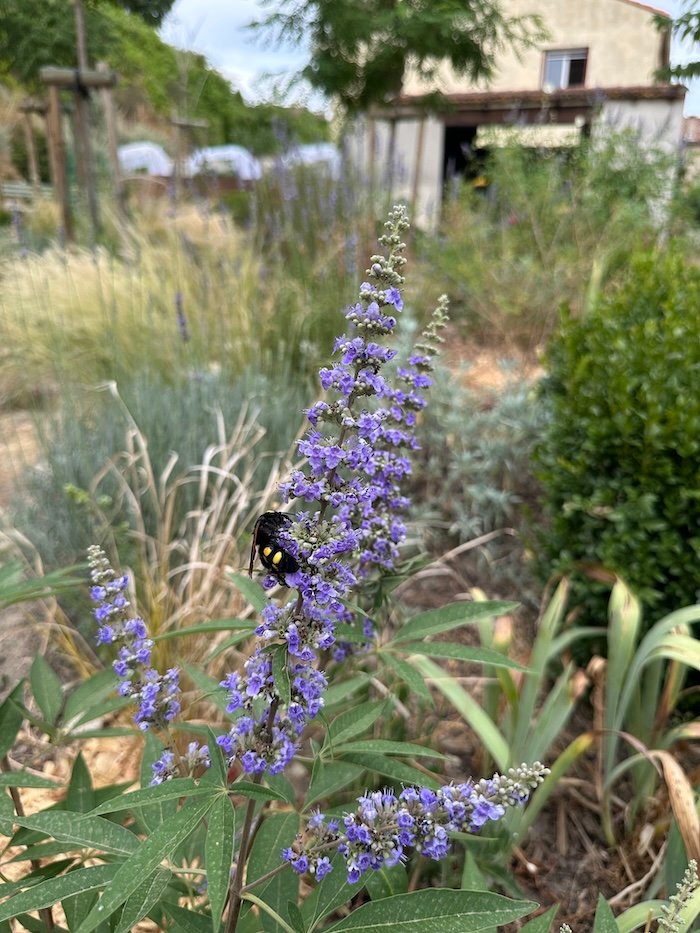
Vitex agnus-castus and Eriophydae / Mites
Vitex agnus-castus can be susceptible to thrips, leaf spot disease, or root rot in soils that are too moist. Mine didn’t have any of that but in its first summer showed stunted, crippled flowers and tiny round galls all over the leaves. Some online research yielded a lead in the form of mites (Eriophydae), specifically Aceria massalongoi. Since it was way too hot for spraying I cut back all afflicted flowers, leaves and the tips of branches. By September healthy leaves had re-grown and it even flowered a little in October.
This year it has re-grown healthily again although its flower spikes tend to be less long and full than those of its little relative in another area of the garden.
Mite damage on Vitex agnus-castus: stunted, crippled flowers and leaf galls:
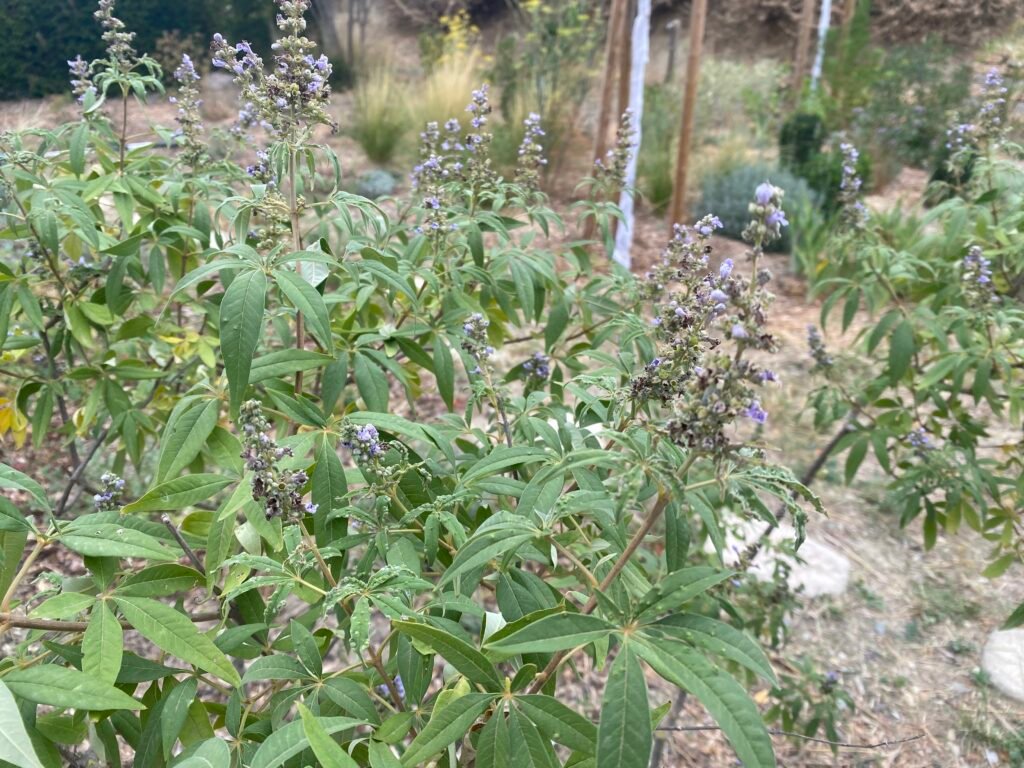
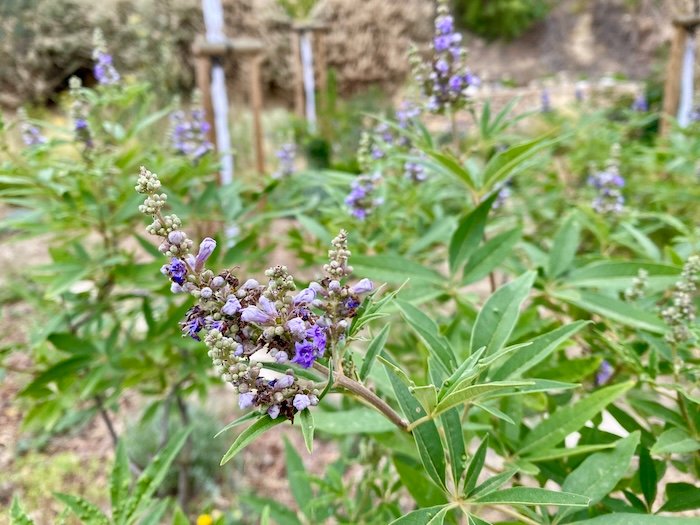
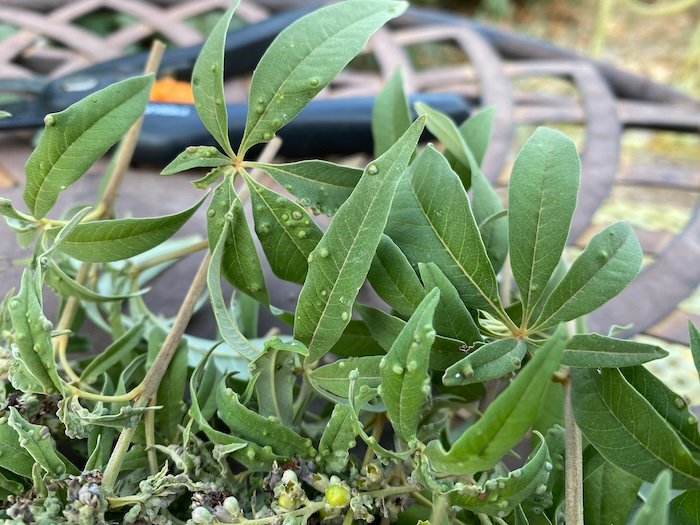
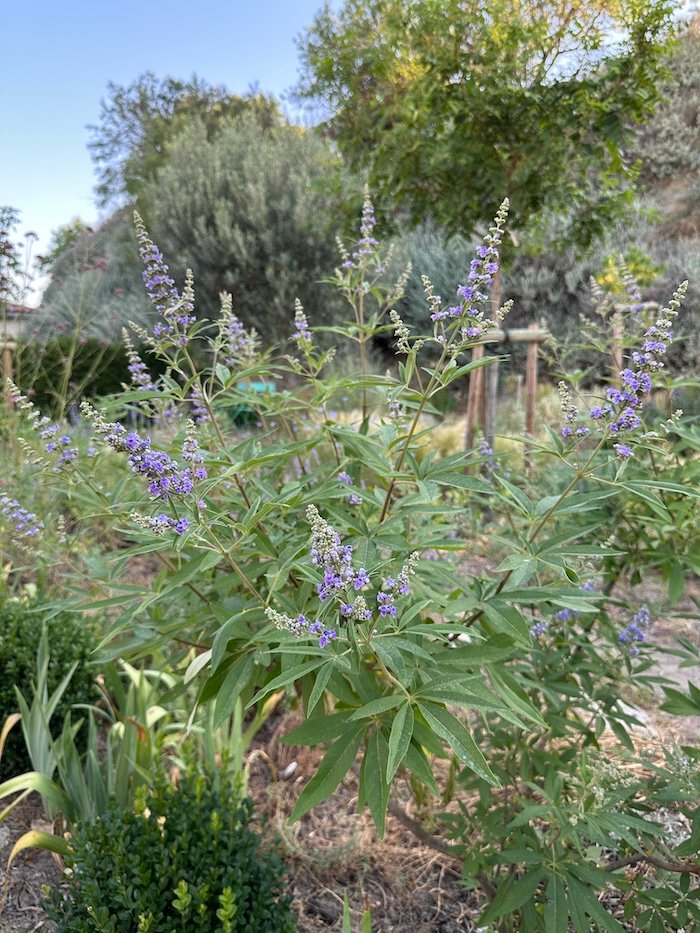
Leave a Reply